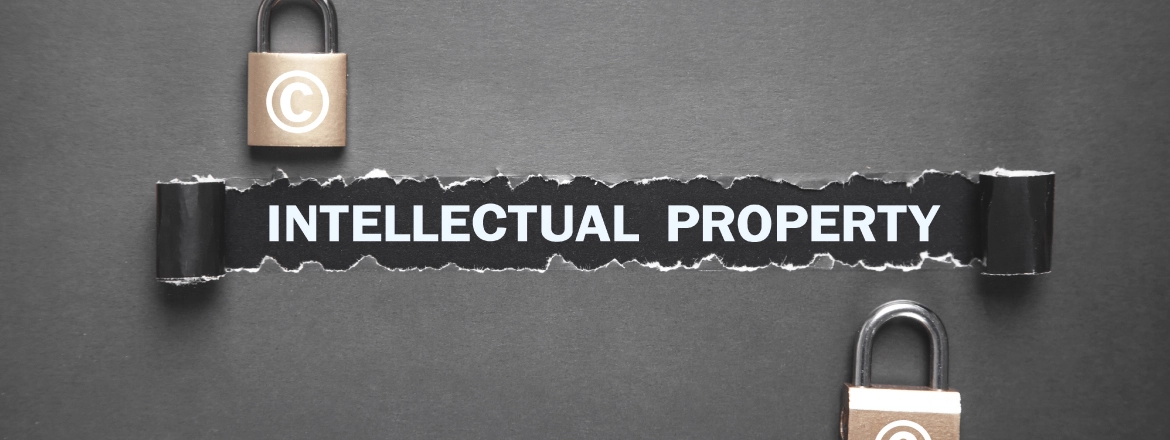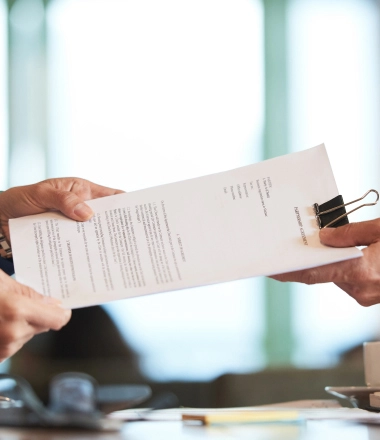19 Different Ways to Protect Intellectual Property

Table of Contents
What is intellectual property? “Intellectual property is the oil of the 21st century”, rightly says Mr. Mark Getty, the founder of Getty images. Intellectual Property can literally cover everything from a production procedure to product launch schedules, a trading secret such as a chemical formula, or a list of countries where the specific patents are licensed. The formal concept of intellectual property (IP) according to the World Intellectual Property Organization (WIPO) is the “creations of the mind — inventions, literary and artistic works, symbols, names, images and designs used in commerce.”
From brand name and logo to products, services, and processes that the company offers, intellectual property can cover a wide range of topics. An organisation is bound to face losses when these concepts are used without their permission.
Almost every company has undeniably benefited from the internet, which allows goods, services, and marketing messages to reach a large audience at a low cost - but it has also raised the risk of intellectual property infringements. This ultimately makes the protection of Intellectual Property one of the most important things to do in today’s business world.
Effective Ways To Protect Intellectual Property
The question is how shall we protect our Intellectual Property against possible violations? The following are the best ways how to protect intellectual property rights (IPR Protection):
1. Apply For Trademarks, Patents, and Copyrights
Companies can protect their core management and R&D operations through intellectual property rights and registrations, and also have a better bargaining position for cross-licensing and counterclaims. Intellectual property rights and registrations also allow a corporation to obstruct competing goods, deter new entrants, and pave the way for future market share via technological advancements.
Intellectual property rights come in a variety of forms, each one of which is a protective right to sue if a third party infringes. A few of them are:
Copyrights
They are a type of intellectual property that protects original artistic expressions or works of authorship. Copyrights may be licensed for text, artwork, drawings, or combinations of these objects produced by a corporation.
Trademarks
They are brand names, symbols, or logos that are used to distinguish a company's products or services. A trademark is a name, word, signature, text, emblem, painting, figure, inscription, photograph, or advertising that is used to identify a group of objects, goods, and services as belonging to one owner or originating from one source.
There are many advantages of trademark registration in the UAE, including the protection of the brand and the assurance that other firms cannot clone or imitate your trademark. The Ministry of Economy in the United Arab Emirates is the government authority in charge of trademark registration, renewal, and cancellation.
Patents
Patents are generally used to register inventions, things that are unique and not known to the general public—as well as the methods by which they work. Technical information about the invention must be submitted to the public through a patent application in order to obtain a patent.
2. Never Stop Innovating
Plagiarism will also be a problem in most industries. To some point, this explains why creativity makes such rapid evolutionary leaps. Your rivals would never be able to catch up to you if you have endless innovation loops. That would necessitate your business running lean and fast like an Olympic athlete.
3. Arrange Some Evidence While Innovating
There are also several instances where rivals learn about an invention from leaks and request for a patent citing it as their own. You'll have to prove that you're the rightful owner as a consequence of it now. This can be accomplished by maintaining a log of evidence that documents the evolution of intellectual property rights (for example, dated and signed copies of drawings and drafts).
Intellectual Property is one of the most important intangible assets any company can have and there must be a proper strategy to protect it.
4. Separate Teams
If at all feasible, the technical teams should be geographically divided, and it should be emphasized that neither of them has access to the whole product. In order to breach the product's protection and sanctity, all of these teams will have to work together to rob the whole product. Separation of duties is a fundamental principle of information security that can aid in the protection of intellectual property.
5. Get the Intellectual Property Infringers Punished
Maintain patent and trademark security and enforce your rights by reporting violations and charging violators where the business situation requires it.
6. Avoid Joint Ownership For Intellectual Property Rights
Make an effort to escape joint intellectual property rights. It is always beneficial for you to have control of your rights. In the long run, joint ownership of such rights can cause confusion and legal issues threatening the security of these assets, causing harm to all parties involved.
7. Create Awareness Among Your Employees Regarding Intellectual Property Security
Awareness training will help fix and avoid possible Intellectual Property breaches, but only if it's tailored to the assets that a certain group of workers must protect. Engineers and scientists pay close attention when you speak in concrete words about what they've spent a lot of time working on. Humans, as is so often the case, are the weakest link of the defense chain. That is why an IP security strategy that relies solely on firewalls and copyrights while ignoring employee knowledge and preparation is doomed to fail.
Most of the time, intellectual property (IP) gets leaked from a company through mistake or by incompetence. Ascertain that the workers are mindful of the ways in which they can unintentionally reveal IP.
8. Get Exactly-Matching Domain Names
If possible, an exact-match domain name is one of the best intellectual property protection strategies for trademarks and copyrights (that you already own). Though it can be a bit expensive, the long-term gains are unrivaled.
9. Think Like Someone Who Would Violate Your IP Rights
What would you do if you needed to spy on your own business? This will definitely make you consider safeguarding contact lists, shredding papers in recycle bins, convening an internal council to approve the R&D scientists' publications, and other strategies that might be useful for your business.
10. Make Sure the IP is Owned in a Way that Allows Further Development
The intellectual property rights should be registered in a way that allows you to develop or modify them whenever required. If you find something new, when employed as an employee (for example, for a corporation or an academic institution), the contract would almost definitely have a clause regarding it. In most cases, the employer may get the first call on the invention, but there may be provisions in place to allow the employee to reclaim rights if the invention is not exploited within a given amount of time-in some nations, this is enshrined in statute.
11. Draft Strong Non-Disclosure Agreements
It is also a wise decision to get some help from a legal agent during the drafting of non-disclosure legal provisions which needs to be clear and concise. Always make sure that all other contracts you use in your company help protect your IP. Jobs contracts, licenses, and distribution contracts are few examples.
12. Consult Intellectual Property Experts
Contact a patent or trademark agent for help with searches and licensing to ensure that any intellectual property you create is adequately secured. Any money spent on intellectual property is money that can't be spent on manufacturing, marketing, or other stuff, so consider why you're defending it. There are several legitimate reasons: to prevent anyone from copying you; to bring value to your business if you intend to sell it; to sell or license to a third party; to keep it in your armory if you suspect you will be sued and want to countersue.
13. Publish It Wherever Possible And With Attribution
Being the "first to apply" for a patent in the UAE is always the best and the safest way to defend your non-trade secret IP. Other than this, another common way to ensure that your Intellectual Property is recognised as yours is to publish and cite it extensively, always making sure that your company's name is credited to wherever it is listed. The more people who see your intellectual property online, the more support your Patent can get.
14. Keep Your Idea A Secret Until You Have Filed A Patent Application
Make sure that you never share your idea with anyone before you have protected the same. This is because the other person might file for a patent before you and gain ownership rights over it. There is an old maxim that says “a secret shared is not a secret anymore”. While a secret shared under a non-disclosure agreement (NDA) (documents most people have heard about but probably never read), ought to stay secret, discussing an invention under the umbrella of confidentiality is no substitute for being able to freely discuss or publish an idea that is protected by a patent application.
15. Create A Comprehensive Strategy
Create a strategy that covers all of the intellectual property, including all inventions and technologies, concepts, trade secrets, original content, and domain names.


16. Enforcing Security Policies
Insiders or frustrated workers frequently compromise classified records, so organisations should place a high priority on enforcing protection policies. Employees should be briefed about the company's intellectual property protocols and practices, as well as the implications of their acts.
A data protection policy should specify which data must be secured and where it lives, as well as who has access to it and how it must be protected. It should also specify how confidential data, such as IP, should be transported and how it should be destroyed when no longer needed or necessary.
17. Protect Your Intellectual Property With Strong Access Control
Manuscripts, creations, and all ideas should be kept in a secure location protected by an identity and access management system. With compromised credentials accounting for 81 percent of breaches, it's critical to store intellectual property on a system that employs adaptive authentication with risk analysis, or at the very least two-factor authentication. Passwords are no longer an effective means of security.
18. Understand Where Your IP Is, and Where It’s going
Although it's critical to protect your core IT structures, it's also critical to include other, less visible places where your data could be stored or processed:
-
Printers, Copiers, and Scanners
Larger endpoint machines will hold the documents they handle, and they're usually linked to the network and remote-control systems, making them particularly vulnerable to IP hackers. Be sure you have the best protocols and processes in order to ensure that all records are removed since they've been used, as well as the right cybersecurity tools and network safeguards to deter unauthorized entry.
-
Third-Party Sharing
IP is often exchanged with vendors, associates, or customers, making tracking and protecting it more complicated. Work with legal specialists to ensure that your third-party arrangements specify how your IP can be protected and that you have safeguards in order to ensure that those terms are followed.
-
File-Sharing and Cloud-based Software
It's critical to remain mindful of the applications and software your staff is using, whether they're company-managed or shadow IT that they've downloaded themselves, so you can avoid any unauthorized cloud access. Ensure that all company-approved applications are properly installed, protected, and up-to-date for added security.
19. Keep It Quiet And Out Of Sight
Patenting or copyrighting works and processes, and actively defending them in court, are two traditional ways of securing IP. Digital Rights Management schemes are used in modern techniques. Simply keeping information confidential and limiting disclosure to the trade secrets that make up the IP, and designing the mechanism to keep them hidden, is a now somewhat unusual but still successful method contrary to what we discussed previously.
Conclusion
As an outcome, it is strongly advised that companies develop and enforce a strategy for doing business in the UAE, especially in terms of how trademark rights are treated. One of the most precious things you can possess is a trademark. It is advised that you file your trademark at the time of establishing your company in the UAE to protect and enforce your trademark rights. This will enable the organisation to develop a long-term brand identity capable of increasing its goodwill. Last but not least, businesses must still be on the lookout for and vigorously protect registered trademark violations in the area.
For more information on how we can help you protect and manage your intellectual property, drop us a line at [email protected].






